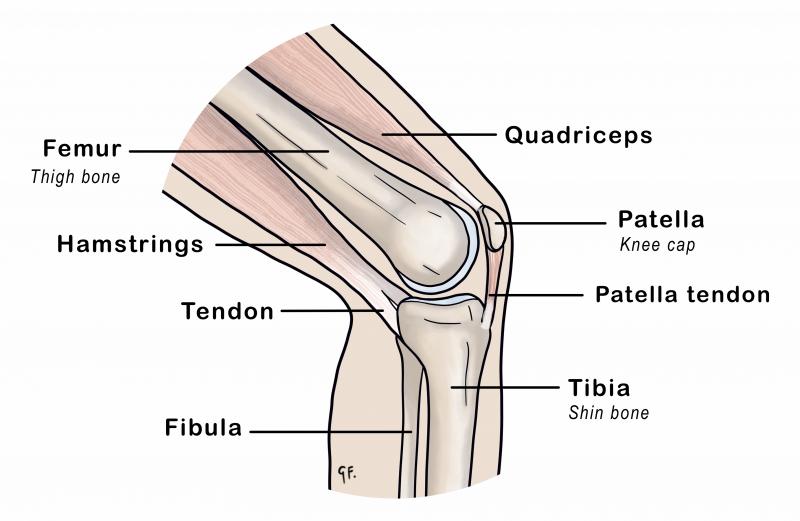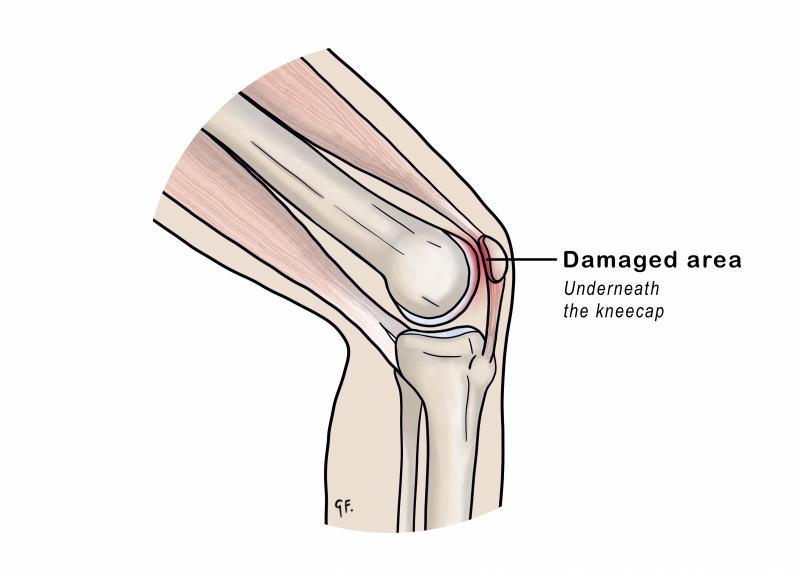Knee Pain In Children
Knee Pain In Children
Knee pain is common in tamariki (children) and rangatahi (young people). It can happen for many different reasons. Learn more about the different causes of knee pain in tamariki and rangatahi.
Key points about knee pain in children
- knee pain is common in tamariki and rangatahi
- it can happen for different reasons
- tamariki commonly get pain around their kneecaps or at the front of their knees
- knee pain often happens when they're growing fast or when they're physically active
- the treatment your child needs for their knee pain depends on what is causing it
- if your child can’t walk, has swelling around their knee with a fever, or night pain for 3 or more nights, see a health professional urgently
A bit about the knee
The knee is the largest and strongest joint in the body. It includes the:
- thigh bone (femur)
- upper end of the shinbone (tibia)
- kneecap (patella)
Muscles, ligaments and tendons around the knee act like strong ropes to hold the bones together.
The below illustration looks at the parts of the knee joint.

What are the symptoms of knee pain in children?
Tamariki with knee pain may experience:
- a dull ache in the knee after physical activity
- pain during physical activity
- tight muscles at the front or back of the thigh
- pain at the top of the shin bone
- a lump at the top of the shin bone
- popping or cracking noises when climbing stairs or bending the knee
The symptoms that your child has will depend on what is causing their knee pain.
What are some common causes of knee pain?
There are many different causes for knee pain in tamariki and rangatahi. Some common causes are listed below.
Injury
Injury to the knee is the most common cause of knee pain in tamariki and rangatahi. Because tamariki are active, they can fall onto or knock their knee against things. This can cause pain in the knee.
Knees have a large range of movement. The bones, ligaments and tendons around the knee are strong, but forceful movements such as running or jumping can cause sprains and strains.
Chondromalacia patella (runner’s knee)
Chondromalacia patella, also known as runner's knee, causes pain at the front of the knee. It happens because of softening and damage to the protective covering (cartilage) on the underside of the kneecap (patella).
Chondromalacia patella can be caused by:
- muscles being too tight (especially the hamstrings and quadriceps)
- the kneecap being out of alignment
- an injury

See the KidsHealth page on chondromalacia patella disease to learn more.
Osgood-Schlatter disease
Osgood-Schlatter disease is a common cause of knee pain in tamariki and rangatahi. The pain happens because the tendon connecting the kneecap to the shin bone pulls away, causing pain below the kneecap over the top part of the shin. It is common in active tamariki and rangatahi.

See the KidsHealth page on Osgood-Schlatter disease to learn more.
Sinding-Larsen-Johansson syndrome
Sinding-Larsen Johannson is another common cause of knee pain in tamariki and rangatahi. It causes swelling and pain at the bottom of the kneecap. This is an overuse syndrome that typically affects tamariki and rangatahi who are very sporty. The pain happens because of the repetitive strain on the growing bones around the knee joint.

Osteochondritis dissecans
Osteochondritis dissecans is a condition where a small piece of cartilage in the knee becomes weakened and can break off. This can cause knee pain, swelling, and difficulty moving the knee.
Osteochondritis dissecans happens in tamariki and rangatahi because their bones and cartilage are still growing and developing. It's often seen in active tamariki and rangatahi, particularly those involved in sports.
Infection
Joint infections, also known as septic arthritis, occur when harmful bacteria or viruses infect the space within the joint. Tamariki with joint infections may experience symptoms such as swelling, redness, warmth, and limited movement around the knee joint.
Joint infections can be serious, and they need treatment with antibiotics. If you suspect your child has a knee joint infection, see a health professional immediately.
When should I take my child to see a health professional?
If your child’s knee pain will not go away, see a health professional. They will ask you questions about your child’s pain and may examine their hip, knee and foot. The health professional may arrange an x-ray for your child if needed.
See a health professional urgently if your child:
- is refusing to put weight on their leg
- has a fever with swelling around the knee
- has pain in their leg at night for more than 3 nights
What are the treatments for knee pain?
The treatment that your child needs for their knee pain will depend on what’s causing it.
If your child’s knee pain is caused by Osgood-Schlatter disease or chondromalacia patella, the treatment involves reducing their activity level and sometimes seeing a physiotherapist.
What are some simple ways I can help my child to manage their knee pain?
If your child has knee pain, you can try some of these simple things to help.
Limit activity
Encourage your child to limit any activities that hurt their knee. If a certain sport or activity gives them knee pain, limit the activity or get them to stop until they are pain-free - this may take a few days to weeks. Remind your child not to overdo it when they are being active.
Prepare before activity
You can help your child prepare themselves before sports or activities. This includes making sure they have the right shoes for that activity. Also, encouraging them to stretch before any sports or activities can help.
Pain relief
If your child has pain from an injury or a health professional has diagnosed the cause of their knee pain, they may recommend pain relief.
Paracetamol
If your child has pain, you can give paracetamol to make them more comfortable. You must follow the dosage instructions on the bottle. It is dangerous to give more than the recommended dose.
Other medicine
If your doctor gives your child ibuprofen (such as Nurofen or Fenpaed), or if you buy it at the pharmacy, follow the dosage instructions carefully. It is dangerous to give more than the recommended dose. Never give your child aspirin as this may increase the risk of Reye syndrome, which is a rare and serious illness.
RICER
RICER stands for rest, ice, compression, elevation and referral. If your child has injured their knee, use RICER to help reduce swelling and to speed up their recovery.
Rest
Stop your child from moving the knee joint. It is important to rest the area as movement can increase bleeding and swelling.
Ice
Use an ice pack over the knee. Wrap the ice pack in a light cloth like a tea towel. Ice can help reduce pain and swelling. Apply ice for 15 to 20 minutes every 2 to 4 hours for up to 72 hours after the injury.
Compression
Bandage the knee firmly (but not too tightly). Wrap the bandage around, above and below the knee joint. This helps to stop your child from moving the injured area too much.
Elevation
Keep the injury area elevated. If it is a leg injury, keep the leg above the hip by putting it up on a chair, pillow or stool. Use a sling for arm injuries.
Referral
If your child’s pain and swelling are not settling or they can’t use the muscle or joint, take them to the medical clinic to get checked by a healthcare professional.
This page last reviewed 09 July 2024.
Do you have any feedback for KidsHealth?
If you have any feedback about the KidsHealth website, or have a suggestion for new content, please get in touch with us.
Email us now